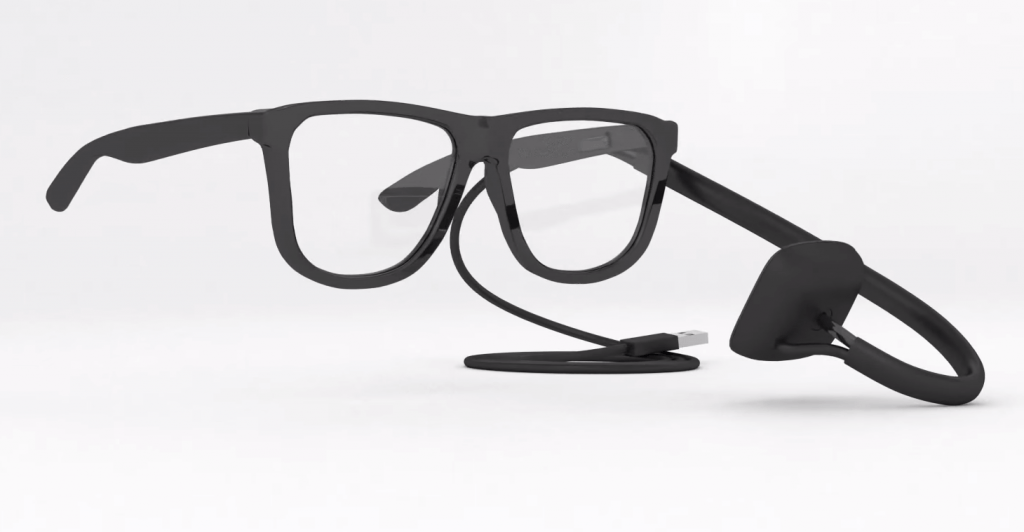The viral “Ice Bucket Challenge” that catapulted ALS into our lives last year, encouraging people to film themselves pouring ice water over their heads, became a social media sensation within weeks. While the philanthropic blockbuster sparked millions of donations to ALS research, still nearly 6,000 Americans are diagnosed with the neuron motor disease every year, losing almost all of their communication skills as the disease progresses.
SEE ALSO: Beyond The Ice Bucket Challenge: Real Treatment For ALS
Now, a new Israeli-made device called EyeControl is striving to give a voice to those who are unable to verbally communicate, using the movement of their eyes.
An invention inspired by personal connections
Amyotrophic lateral sclerosis (ALS), often referred to as Lou Gehrig’s Disease, is a progressive neurodegenerative disease that affects nerve cells in the brain and the spinal cord. On average, most patients are diagnosed with the disease when they’re 55-years-old, and eventually suffer from a complete loss of speech. That’s where the EyeControl device steps in.
The screen-free, affordable mobile communication device was developed by a group of Israeli entrepreneurs who were personally touched by the disease. Both EyeControl co-founder Or Retzkin and head of product Tal Kelner lost their grandparents to ALS, and have been committed to helping individuals who are “locked-in” or are unable to speak due to muscle deterioration ever since. In addition, CTO Itai Kornberg introduced the technology when he embarked on the mission to help an ALS patient communicate with his eyes using a computer to translate the movements.
The EyeControl system is a combination of computerized glasses and a mobile app that captures eye movements and translates them into audio or text commands using an eye-tracking algorithm. The glasses are integrated with a camera that detects eye movement, which is then analyzed by a micro-sized computer installed in the glasses. Using a Bluetooth connection, the commands are then relayed through the system’s headphones or speaker into the patient’s ear.
The system is based on a three-step model: Patients are able to call for assistance, put together pre-determined sentences such as “I am cold,” and compose sentences simply by swiping their eyes in certain directions.
To get the device to market, the company has launched an Indiegogo crowdfunding campaign in hopes to raise $30,000. Since the start of the campaign on July 7, the startup has exceeded its $30,000 goal, reaching $42,000 in less than a month. Today, the company decided to extend the campaign in order to raise up to $50,000 in the course of another two weeks. Despite the company’s time-crunched Indiegogo campaign, Retzkin could not confirm a product release date.
A screen-free and affordable device
Sign up for our free weekly newsletter
SubscribeEyeControl has set its sights on making a difference in the lives of ALS patients by teaming up with the non-profit organization Prize4Life, headed by CEO Shay Rishoni, an ALS patient. This long-term partnership is aimed at raising awareness to ALS and advocating EyeControl’s solution.
SEE ALSO: First Touch-Screen ‘Sesame’ Smartphone Allows Disabled To Control Phones With A Nod
However, EyeControl is not alone in the realm of eye-gaze systems for the disabled. Systems like Tobii DynaVox, LC Technologies, and even the Israeli-invented technology behind the Sesame Phone, all compete to open up access to touch-screen dependent technologies. EyeControl, which unlike many of its competitors doesn’t require a screen, stands out from the competition mainly thanks its portability.
“Most patients need to be at home or in front of a computer screen to use a device,” Retzkin tells NoCamels. “So, if you go inside a car or lie down in bed and the screen is not in front of you, you cannot communicate.”
The portable device uses an external battery as a source of electricity, allowing the patient to travel and communicate through the glasses, regardless of location.
“We use vocal feedback, so there is an ear set, not a screen,” Retzkin explains. “It’s very intuitive, so you can swipe with your eye according to what you hear.”
And unlike similar devices, which range in cost from $3,000 to $10,000, EyeControl is expected to be priced at the affordable price of $100, with the goal of ensuring accessibility to all patients, regardless of their financial standing. According to Retzkin, his team orders the materials in bulk and is building the device in-house, which makes the system significantly cheaper.
Photos, infographics and video: The ALS Association, EyeControl, Ice Bucket Challenge
Related posts

Editors’ & Readers’ Choice: 10 Favorite NoCamels Articles

Forward Facing: What Does The Future Hold For Israeli High-Tech?

Impact Innovation: Israeli Startups That Could Shape Our Future






Facebook comments